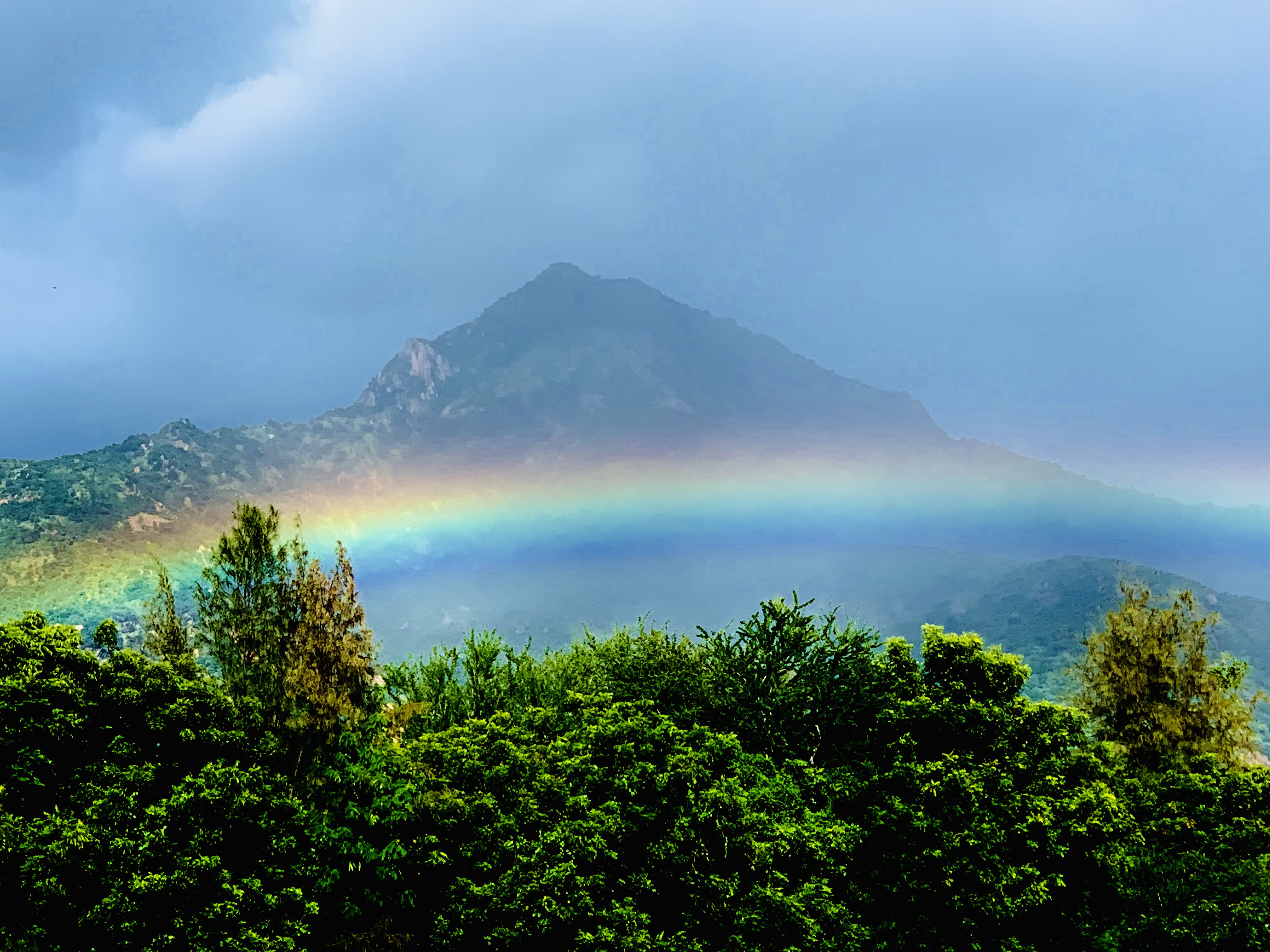Hey there, fellow seekers! Ever wondered about the secrets whispered by the wind as it dances around Arunachala? This isn't just any mountain, you know. It's a legend, a story etched into the very fabric of our ancient texts. Let's dive in!
A Cosmic Pillar of Light
The Vedas
Now, picture this: the Vedas, these super old scriptures, talk about a "cosmic pillar," a giant, invisible beam of energy holding the whole universe together. Think of it like the backbone of reality, connecting heaven and earth. And guess what? Many believe Arunachala, with its majestic, cone-shaped peak, is a physical manifestation of that very pillar! Imagine this pillar of light suddenly solidifying, becoming the very mountain you see today. Mind-blowing, right? It's like witnessing the invisible become visible, the divine taking on a tangible form.
The Death of Creativity’s Learning Curve

Welcome to an era in which the friction between an idea, and creatively expressing that idea, is removed. Whether it is as an image, an essay, an animated story, or even a video, you can simply talk about what you see in your mind’s eye and get immediate visual output. “But that’s not real creativity!” some may exclaim. Until now, “creativity” has conflated both the generation of ideas and the process involved to express those ideas. Is the process of intricately chiseling a beautiful sculpture creative, or is the idea of the sculpture — the image conjured up in the mind’s eye — the truly creative part of an otherwise laborious and tedious process? It’s an age-old argument. Michelangelo, for instance, believed that each stone has a statue inside it and the sculptor discovers it by chipping away. At the same time, the great master employed as many as 13 assistants to help him paint the Sistine Chapel. So, it’s complicated.
Most artists today can’t afford 13 human assistants, but they use other tools to reduce the laborious parts of creativity, including AI-powered shortcuts, component libraries for product designers, templates, and now generative AI. This latest breakthrough has elicited both fanfare and fear because of its ability to conjure up an original piece of media based solely on a text prompt. Conceptually, it’s like a roomful of inexperienced interns who instantly present you with endless renditions of whatever you describe. Most of what they present will be wrong, but you may get some stuff to work with and, occasionally, something novel will catch your eye.
Of course, behind the scenes, the machine learning engines that drive AI creation were trained using millions of pieces of content from real artists, many of whom never consented to have their work used in that way. To correct this, I anticipate a series of regulations, evolutions in copyright law, new walled gardens and token-gated portfolio experiences, and new compensation models for artists that opt-in and/or allow the use of their style for GenerativeAI purposes. Serious issues to solve and unfortunately, as usual, the availability of such tech preceded these discussions. But here we are, and we need to find the path to sustainability as well as opportunities for both artists and non-artists alike.
The Opportunity for Creative Pros in the Era of Creative Confidence
As someone is driven to help all people access the tools for creative expression, it has been thrilling to watch hundreds of millions of people who may have been intimidated by professional-grade tools like Photoshop or Premiere Pro begin tinkering creatively using new template-based and AI-driven tools and technologies. At the same time, there is a common sentiment — and often times anxiety — among creative professionals that these tools threaten their livelihoods.
Humans have always been frenemies with new technology. We relish the efficiencies and welcome having more brain power for higher-order tasks. And yet we fret about the interim disruptions as we adjust. That was the case with the advent of photography, automobiles, and desktop publishing, and I don’t think this is an exception. As more human jobs become assisted, automated, or replaced by artificial intelligence, we must spend our hours where we have a competitive advantage over machines: developing new ideas, expressing old things in new ways, innovating processes, and crafting the story that infuses our creations with meaning.
As generative AI gets better at producing content, it’s important to remember that creativity is about far more than the outcome. The striking and wondrous thing about creativity is its mysterious seeds of origin. Do not new ideas come from genuine curiosity and initiative? Mistakes of the eye? Childhood traumas? Nobody fully understands the origins of ingenuity, but we know it is a function of the arrangement of our neurons and is as individualistic as our fingerprints. The creations that see the light of day in the form of pigment or pixels or breakthrough businesses are the result of these mysterious inner workings. Creativity is not just the output, it is the inputs — the ideas and the ingenuity. It’s the judgment to know when something is good and when it’s done. It is the creative control to modify and iterate based on a career of fine-tuned intuition. It is the unique human story that brought it to life, and the story we share that gives the work meaning to those who experience it. And it is the innovation in the creative process itself that distinguishes the outcome. As the process part of creativity — chipping away at the stone or mixing the colors or iterating the pixels — becomes less of an obstacle, the other parts of creativity — the original idea, the judgment, the innovations in process, and the story — become more important than ever.
Herein lies the opportunity for the creative professionals among us. While the world becomes more creatively confident and empowered, there will always be an opportunity to go further. The magic of creativity — the many inputs of life experience, and emotion, and how they influence our approach to our work — remain in our creative control. And we know, creativity is most impactful when accompanied by meaning and story. AI models and templates can’t generate meaning.
Welcoming & Adapting to Ubiquitous Creative Confidence
As the expression of ideas becomes exponentially easier, the ideas themselves become more of the differentiator (yes, I think “Prompt Engineering” will become a discipline in and of itself!). Good ideas aren’t derived solely from logic and patterns of the past; they’re also the product of human traumas, mistakes of the eye, and uniquely human ingenuity. I am excited about AI, but I am ultimately long on creativity (aka humanity). With fundamentally easier execution of ideas and more ideas actually seeing the light of day, perhaps meritocracy will kick in and help the best ideas — now sourced from a far greater pool of creators — get the best opportunity and reach the most people.



Much like every sport’s top athletes improve every generation, so should creatives. I would argue that AI is like some breakthrough new racket or sneaker — it almost unfairly elevates the game for every player and allows the very best to advance the game itself. Revolutionary tennis rackets and string technology allowed any weekend player to hit shots they never would have been capable of before. But it didn’t turn them into Rafa Nadal or Roger Federer. People with extraordinary talent, dedication, and fortitude will always stand out.
So here’s my plea to the creative community: As new technology and the “creativity for all” revolution ushers in the era of creative confidence, let’s welcome all the new players. But, in parallel, let’s us elevate our own game and advance every creative field through our own ingenuity. Let’s embrace yet pressure-test the new tech on our own terms — insisting on attribution, getting compensated for our work, and leaning into new models founded on ethics and dedicated to instilling creative confidenc



Leave a reply